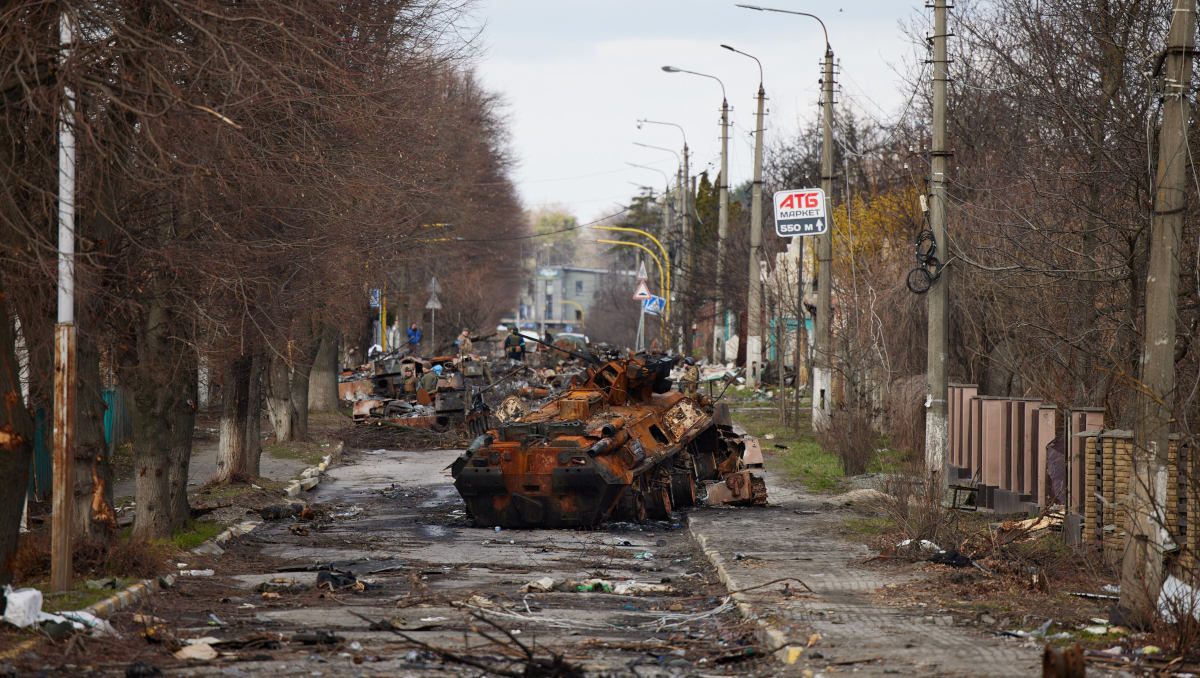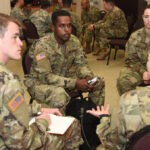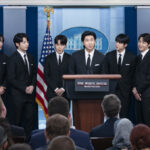
The UN’s lack of centralized authority, the veto power of the Security Council permanent members, and the inability of the General Assembly to pass binding resolutions have allowed Russia to shield itself from collective security actions under the UN framework.
After the devastation of World War II, the United Nations (UN) was established to prevent future generations from enduring the scourge of war. Founded in 1945 with 51 member states, the organization has since expanded to 193 nations, all pledging to “maintain international peace and security.” In support of this pledge, UN member countries commit to uphold Article 2(4) of the UN Charter, which prohibits the use of force against the territorial integrity or political independence of any state. However, Russia’s invasion of Ukraine raises concerns about the UN’s ability to enforce this principle and has reignited debates over the relevance of Article 2(4). These debates have surfaced repeatedly in response to past conflicts, including North Korea’s attack on South Korea in 1950, NATO’s intervention in Kosovo in 1999, and the U.S.-led invasion of Iraq in 2003.
In the case of Russia’s invasion, structural shortcomings of the UN and a fragmented global response have undermined the enforcement of Article 2(4) and enabled Moscow to evade accountability. The UN’s lack of centralized authority, the veto power of the Security Council (UNSC) permanent members, and the inability of the General Assembly (UNGA) to pass binding resolutions have allowed Russia to shield itself from collective security actions under the UN framework. Additionally, the Global South’s economic and strategic alignments with Russia have reduced the effectiveness of Western-led efforts to hold Moscow accountable, diminishing the consequences of violating Article 2(4). Despite these enforcement issues, the article remains valuable in guiding diplomatic responses and shaping international norms. As seen in Russia’s legal justifications and the UNGA’s resolutions, the prohibition on the use of force continues to provide a universal legal framework and norm to evaluate state behavior.
Article 2(4)
Article 2(4) has been described as the cornerstone of the UN Charter and one of the foundations of the modern international legal order. It states the following:
“All Members shall refrain in their international relations from the threat or use of force against the territorial integrity or political independence of any state, or in any other manner inconsistent with the purposes of the United Nations.”
While the article codifies the prohibition on the use of force, the UN Charter also provides two key exceptions for when force is justified. The first is the inherent right to self-defence under Article 51, and the second involves authorization by the UN Security Council under Chapter VII. Beyond these codified exceptions, controversial practices such as humanitarian intervention and the Responsibility to Protect (R2P) doctrine have emerged, though they lack formal recognition under Article 2(4). Despite Russia’s efforts to justify its actions under the UN Charter, leading scholars have characterized Moscow’s invasion of Ukraine as a “flagrant,” “unambiguous” and “egregious” violation of Article 2(4).
UN Structural Limitations
Unlike domestic legal systems, which operate through hierarchical structures with enforcement mechanisms, the United Nations relies on voluntary cooperation among sovereign states, making enforcement inherently challenging. Without a centralized authority, compliance with Article 2(4) depends on mutual benefits, reciprocity, and the pursuit of legitimacy as responsible global actors. However, as demonstrated by Russia, a country’s pursuit of its national interests can override these incentives, undermining adherence to Article 2(4). When this occurs, the rulings of international law can become largely symbolic, in contrast to domestic legal systems that often possess mechanisms to ensure enforcement. For example, although the ICJ ordered Russia to “immediately suspend” its military operations, the court’s lack of enforcement mechanisms left the ruling without practical effect.
While the UN established the UNSC to augment enforcement of Article 2(4), the council’s inability to hold permanent members accountable exacerbates issues of enforcement. The UNSC has the authority to adopt legally binding resolutions on all UN member states when addressing threats to international peace and security. However, for a resolution to pass, it must secure an affirmative vote from at least nine of the fifteen members and not be blocked by a veto from any of the five permanent members: China, France, Russia, the United Kingdom, and the United States. Hence, in the 2022 resolution proposed by the UNSC to condemn the invasion, Russia’s veto prevented its adoption, despite eleven of the fifteen council members voting in favor and no vetoes being cast. Although challenges to enforcement would remain, adopting the resolution could have fostered a more unified response as seen in collective military action in Kuwait in 1990 and Libya’s no-fly zone in 2011. Russia’s actions in the UN structure are a classic example of how permanent members of the UNSC can utilize their veto power to shield themselves from binding resolutions, making collective security of Article 2(4) nearly impossible when a permanent member is the violator.
The strength of the permanent members’ veto power is further illustrated by the UNGA’s inability to enforce collective action. The UNGA, which represents all UN member states, can pass resolutions to express the collective will of the international community and address breaches of international law. However, unlike the UNSC, UNGA resolutions lack binding authority, limiting their effectiveness in holding violators accountable. For example, following Russia’s invasion of Ukraine, the UNGA adopted Resolution ES-11/1, which deplored “in the strongest of terms” Russia’s actions and called for an immediate withdrawal of its forces. Despite the resolution being supported by 141 member states, with only 5 opposing and 35 abstaining, its non-binding nature left it without feasible means to compel Russia to comply. Thus, without a central authority to govern states, permanent members of the UNSC are safeguarded from binding accountability measures because the UNGA cannot overrule a failed resolution in the UNSC.
By strengthening trade partnerships with countries in the Global South, Russia has managed to circumvent the effects of Western economic sanctions.
Fragmented Collective Action
Along with the systematic failures of the UN, another concerning issue lies in the inability of countries to project a unified response to address Russia’s violation outside of the UN framework. Without a binding resolution, countries can still take measures to hold Russia accountable for its violation. For instance, although the United States has recently adjusted its pressure on Russia to create space for negotiations, for the majority of the war it has joined the EU, Japan, Australia, and others in imposing coordinated economic, military, and political costs to deter Russian aggression. However, states aligned with Moscow and nations pursuing nonalignment have diluted the impact of these Western-led efforts.
By strengthening trade partnerships with countries in the Global South, Russia has managed to circumvent the effects of Western economic sanctions. While Western countries aligned to impose punitive measures, many Global South countries have refused to sanction Russia, with BRICS foreign ministers even declaring unilateral sanctions “incompatible” with the UN Charter. As a result, Russia has maintained strong economic ties with smaller nations that rely on it for food, energy, and other critical trade commodities. Additionally, larger economies, such as China, Brazil, and India, have sustained or expanded trade with Russia, further reducing the effectiveness of sanctions. The lack of collective action to hold Russia accountable for its invasion has helped its economy grow by approximately 2.2% in 2023, with some reports suggesting it grew over 3% in 2024.
Furthermore, while Western military aid has been crucial in supporting Ukraine’s defense against Russia, countries such as North Korea, Iran, and China have either covertly or openly provided military support to Russia’s war effort. North Korea sent approximately 3,000 troops to support Russia’s invasion, with expectations of further deployments. Iran has supplied Russia with thousands of drones as well as short-range ballistic missiles, and artillery shells to bolster Russia’s offensive capabilities. Additionally, reports indicate that China continues to send dual-use technologies, such as semiconductor chips, navigation equipment, jet parts, and other military-applicable components. Although this support is smaller in scale and technological sophistication than what Ukraine is receiving from the West, it has nonetheless highlighted the symbolic and strategic challenge of forging a truly unified global response.
The struggle to promote collective action is also evident in diplomatic efforts to isolate Moscow. Although the United States has recently opened diplomatic talks with Russia, for most of the conflict Western countries have endeavoured to impose political costs on Moscow. Nevertheless, despite Russia being removed from international forums such as the Council of Europe and the UN Human Rights Council, it has strengthened its engagement in alternative platforms, including BRICS and the Shanghai Cooperation Organization. Many Global South countries have also resisted publicly condemning Russia, likely out of concern for maintaining diplomatic and economic ties. For instance, the Association of Southeast Asian Nations has failed to issue a unified public condemnation of Russia’s actions, reflecting its members’ cautious approach to balancing relations with both the West and Moscow. Ultimately, countries’ geopolitical interests combined with economic incentives have inhibited the global community from projecting a unified front against Russia.
Enduring Relevance
In the landmark case Nicaragua v. United States (1986), the ICJ emphasized that the breach of a recognized rule does not signify the end of its authority. This principle remains true in Russia’s violation of Article 2(4). Despite enforcement challenges, the UNGA’s overwhelming support for Resolution ES-11/1, which deplored Russia’s actions, reveals the enduring strength of the prohibition on the use of force as a norm of international law. The resolution passed with 141 states in favor and only 5 opposing, reflecting broad international condemnation. Similarly, although Russia’s veto blocked a UNSC resolution, 11 of the 15 Council members voted in favor. Moreover, Russia justified its actions within the UN Charter’s framework, suggesting that even violators recognize the credibility of the article. As Graham Melling notes, Russia’s justification for invading Ukraine “is a clear, if somewhat paradoxical, indication of the affirmation of the UN Charter norms related to the prohibition of the use of force.”
Russia’s reference to the UN Charter also highlights how Article 2(4) functions as a shared legal language that allows states to engage in dialogue across diverse political, cultural, and historical contexts. Christian Tams reinforces this idea, noting that countries “invoke and apply” the charter’s provisions “every week, and have done so since 1945.” This legal framework not only facilitates diplomatic discourse but also reinforces global norms by compelling states to frame their actions in legally recognizable terms. Hannah Birkenkötter exemplifies this phenomenon by stating international law is “hermeneutic,” serving as “a common language that cuts across spheres of authority” and “a conflict management tool for interface conflicts.” The continued invocation of Article 2(4) demonstrates its resilience as an embedded norm in the global system.
Conclusion
In 1945, the founding countries of the UN committed to “take effective collective measures for the prevention and removal of threats to peace.” Yet, as war continues to devastate Ukraine, critical structural flaws in the UN and geopolitical divides hinder member countries’ ability to collectively uphold Article 2(4). The absence of a centralized enforcement mechanism, combined with the UNSC’s veto power and the UNGA’s inability to pass binding resolutions, has enabled Russia to evade collective security measures in the UN. The Global South’s alignment and dependence on Russia has also reduced the impact of Western-led efforts against Russia, undermining the consequences of violating the prohibition on the use of force. Nevertheless, Article 2(4) continues to serve a purpose in the international system as it helps guide diplomatic responses and shape international norms. Moving forward in the 21st century, enhancing the collective action of countries in international institutions will be essential to ensuring that commitment to peace and sovereignty remains more than just a legal ideal but a practical reality.
Noah Jager is a second lieutenant in the U.S. Army and a graduate of the U.S. Military Academy at West Point. He is currently pursuing a Master of Arts in War Studies at King’s College London.
The views expressed in this article are those of the author and do not necessarily reflect those of the U.S. Army War College, the U.S. Army, or the Department of Defense.
Photo Description: Working trip of the President of Ukraine to the Kyiv region, April, 2022.
Photo Credit: Courtesy of President of Ukraine Volodymyr Zelenskyy official website





Here is the “Conclusion” section (see pages 20 and 21) of the article “Has Russia Killed Article 2(4)?: Evaluating the Effectiveness of the Prohibition of the Use of Force in the Conduct of International Affairs” by DG Melling:
“If not dead, then how is Article 2(4) alive in the face of numerous breaches of its prohibition? As noted earlier, Article 2(4) clearly does not ‘stop’ States from using aggressive force in their international relations. In an ideal world, its effect would be to prevent all resorts to force by States; and, although not the subject of this article, non-state actors. Whilst such an ideal world is not ours, the UN Charter’s use of force norms are grounded in a centuries-old pre-occupation that establishes limits on war and aggression. To begin, no one seriously disputes that wars of territorial expansion and conquest are unlawful under Article 2(4). This is clearly borne out by the response of the international community to Russia’s invasion of Ukraine. There is a more nuanced, yet pervasive influence of Article 2(4) that should not be underestimated. This is that the Charter’s use of force norms, prohibiting the use of force, except in self-defense, if authorised by the UN security Council, if not stopping States from using force, do form a part of their calculations in the conduct of their international relations. For example, NATO’s intervention in the Federal Republic of Yugoslavia, the US-led coalition invasion of Iraq or Russia’s invasion of Ukraine. In each case, the Charter’s rules imposed a ‘high burden of justification’ on the States involved. Arguably, this burden of justification becomes an important factor in the decision-making of States. However, (Christine) Gray offers words of caution here that it would be ‘fundamentally misguided to attribute to international law an exclusive role in controlling States behavior.’ She goes on to say, ‘[a]s in the national sphere, legal rules are only one among a variety of factors that may influence behavior.’ So what role do the Charter norms have in controlling state behavior? Maybe the best that can be hoped for is that whilst the law regulating the use of force by States ‘may not yield a simple black-or-white answer, it can [quite powerfully] ‘orient deliberation’ and ‘guide within broad limits’ the decisions of States. It is clear from States justifications/rationalisations of their actions when employing force that States recognise they cannot claim a right to use force for any reason because States understand that they must explain and justify their behavior in relation to the Charter’s use of force norms and the international community.” (The name “Christine” — in parenthesis above — is mine.)
I see you’re a fan, then, of the non-stop shelling of civilians in the Donbass starting after the Maidan, right? Nazi is as Nazi does.
The below will be controversial, but, I believe, it bears consideration:
First, from the “Conclusion” paragraph of our article above:
“In 1945, the founding countries of the UN committed to ‘take effective collective measures for the prevention and removal of threats to peace.’ ”
Next, in this regard — and specifically given the situation that even we, ourselves, find ourselves in today — in this regard, might we need to consider that — from the perspective of Putin and many other people throughout the world today also — :
a. “Threats to peace,”
b. These come in the form of the threats posed by the combined — and/or component parts — of the “states of consent” that are described by Philip Bobbitt below:
“In the information age, a state of terror such as the one that Putin’s Russia has become, cannot countenance states of consent, especially next door. It is Ukraine’s constitutional order — with its independent (though still troubled) judicial system, freedom of the press, multiparty politics, largely legitimate elections, vibrant civil society, and general respect for human rights — that Putin cannot tolerate, lest it provide too tempting an example for democratic activists in his own country who have vehemently opposed him at great risk to their lives and to the public in general that shares so many ties to the people in Ukraine. The ‘peaceful coexistence’ of the Cold War is, in this respect, not acceptable to Putin. …” (From the “Just Security” article “Putin’s Real Fear: Ukraine’s Constitutional Order” by Sir Philip Bobbitt and Viola Gienger.)
Question — Based on the Above: Thus:
If both Putin — and even people within our own and other states and societies today — consider “threats to peace;” these, as stemming from/as emanating from the threats posed to them by such things as the individual, and/or the combined component parts, of the “states of consent” described by Philip Bobbitt above,
Then, in these such perceived “threats to peace” circumstances, what aspect — and/or what article — of what international law might we be able to point to; this, so as to consider “effective collective measures for the prevention and removal of threats to peace” today?
(Or, in circumstances such as these, must some new aspect, and/or some new article, of international law now be proposed? Stated somewhat differently: Given the matters that I present above, are we in “new” — or “old” — “international law so as to keep the peace” territory today?)
Possible shorter version of my comment immediately above:
a. If the individual component parts, or the combined entity and effect, of the “constitutional order” of the “states of consent” described by Philip Bobbitt above, if these are what people such as Putin, et. al, actually consider as the basis for “threats to peace” today,
b. Then, in these exact such circumstances, what old and established international (or other) law (if any) can we point to — or what new and novel international (or other) law (if any) might we wish to develop — this, so as “keep the peace,” in such circumstances today?
Possibly stated even more clearly and concisely:
If both Putin — and even people and parties here within the U.S./the West and elsewhere today — believe that constitution orders that provide for such things as an independent judicial system, freedom of the press, multiparty politics, largely legitimate elections, vibrant civil society, general respect for human rights, etc. (see Philip Bobbitt above); if these folks believe that these such constitutional orders (a) constitute both the primary threat to them today and, thus, (b) constitute the primary threat to peace and stability in the world today,
Then, in those exact such circumstances, is the Article 2(4) UN Charter prohibition against the use of force (use of force here being used externally by Putin to deal with Ukraine’s “threatening” such constitutional order, and/or use of force here being used internally by ourselves and/or others to deal with one’s own such “threatening” constitutional order) — is this such UN Charter prohibition against the use of force likely to preclude, prevent, punish, subdue, correct and/or otherwise deal with (a) such (prohibited?) use of force applications; these, (b) for such (prohibited?) “overcome the constitutional order” purposes?
It is important, I believe, to consider questions — such as those relating to Article 2(4) of the UN Charter above– these, within a proper context. For example, within the context of:
a. The U.S./the West, post-the Cold War, seeking to transform the political, economic, social and value orientation of both our own states and societies, and those of the rest of the world; these, so that same might be made to better interact with, better provide for and better benefit from such things as democracy, capitalism, globalization, international trade, investment, etc. These such “world transformative” efforts tending to gravely threaten everyone — everywhere — who depended upon the status quo (or a recently-overturned-by-the-West status quo ante) — this, for their degree (recent degree) of power, influence, control, status, privilege, prestige, safety, security, etc. And, within the context of:
b. Those states and societies, and/or individuals and/or groups — thus threatened (and/or already “harmed”) by the U.S./the West post-the Cold War — deciding to take defensive, preventive and/or restorative action..
Thus, it is from this exact such specific perspective/within this exact such context, I suggest, that we might best be able to see and understand why, post-the Cold War — and with the U.S./the West “winning” — “threatening”/”transformative” entities, like the U.S./the West, would tend to not let Article 2(4) get in their way.
And likewise see and understand why, post-the Cold War, such “threatened” entities (states and/or societies and/or individuals and/or groups within same) would believe they, also, had the right to not let Article 2(4) get in their way.
Question — Based on the Above:
If the Soviets/the communists had won the Cold War; then, post-the Cold War would not Article 2(4) have been — similarly and for similar reasons — challenged? This, by both (a) those “bent on transforming the world” (in this case, the triumphant Soviets/communists) and by (b) those bent on resisting — and/or on reversing — such “transformative” efforts?
Recognizing that Article 2(4) of the UN Charter may have more to do with the legality, or not, of initiating war/with the legality, or not, of the use of force — while the laws of armed conflict may have more to do with regulating the conduct of wars once they have begun — recognizing this, but in consideration of the “transformative” matters that I present in my comment immediately above, might we consider the following re: the laws of armed conflict?:
“Within the existing framework of international law, is it legitimate for an occupying power, in the name of creating the conditions for a more democratic and peaceful state, to introduce fundamental changes in the constitutional, social, economic, and legal order within an occupied territory? … These questions have arisen in various conflicts and occupation since 1945 — including the tragic situation in Iraq since the United States-led invasions of March-April 2003. They have arisen because of the cautious, even restrictive assumption in the laws of war (also called international humanitarian law or, traditionally, jus in bello) that occupying powers should respect the existing laws and economic arrangements within the occupied territory, and should therefore, by implication, make as few changes as possible. This conservationist principle in the law of war stands in potential conflict with the transformative goals of certain occupations.” (See the first two paragraphs of Sir Adam Roberts “Transformative Military Occupations: Applying the Laws of War and Human Rights.”)
Question — Based on the Above:
Thus, if the laws of armed conflict tell us that it is illegal, or at least dumb and imprudent, to pursue “transformative” ends via such things as military occupations (because same is more likely than not to inflame and extend, rather than to quell, conflicts?), then, given this such laws of armed conflict understanding, where then is the logic, the rationale and/or the legality for initiating wars/for the use of force in the first place; this, to pursue such “transformative” ends?
This was a really detailed and helpful piece on Article 2(4)! It’s evident how complex and crucial that foundational principle is, especially as we navigate an increasingly multi-polar and interconnected international landscape. I appreciated your thoughtful exploration of the challenges, particularly regarding non-state actors and the evolving nature of aggression.
I’m curious, as you look forward, do you see any specific avenues where international consensus might actually strengthen or clarify interpretations of Article 2(4) in relation to emerging threats like persistent cyber-attacks or the proliferation of non-state armed groups that operate across borders? It seems like such delicate work to adapt without unraveling foundational principles.
Also, thinking about the historical context, did you come across moments where significant shifts in global power dynamics noticeably altered how major states interpreted 2(4), beyond just the surface rhetoric? It’d be fascinating to consider if certain interpretations emerge from necessity rather than shared legal consensus.